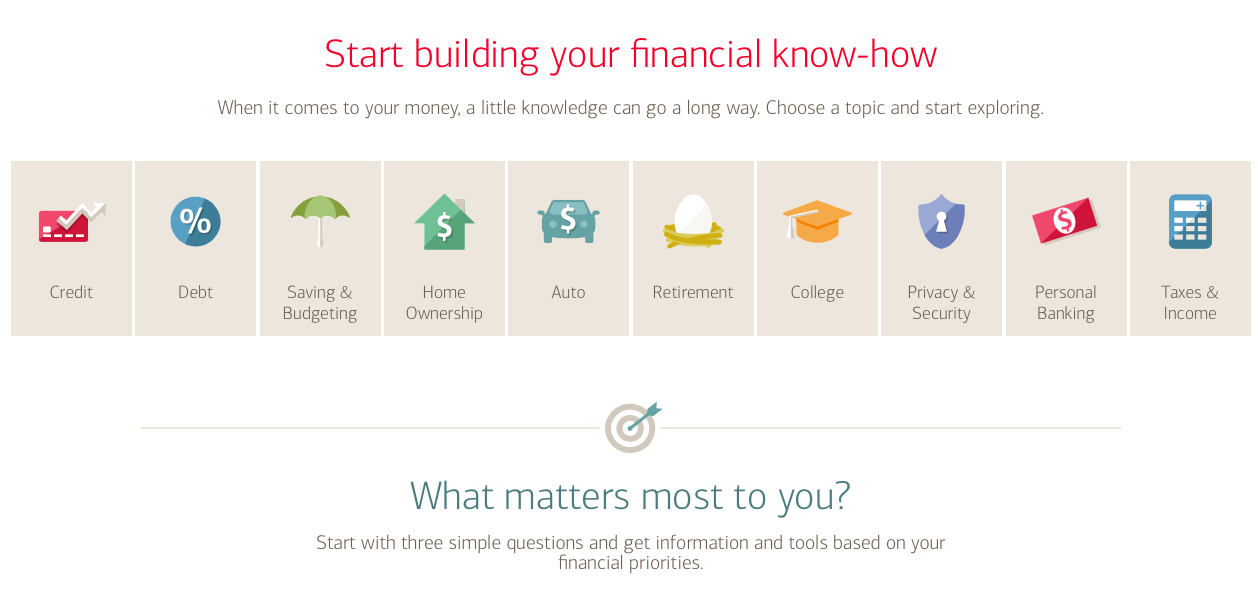Brands
Why Finance Brands Are Investing More in Educational Content
Americans are bad at personal finance. Only two in five adults have a budget and track their finances closely, according to a national study by the Harris Poll. Personal finance is all but ignored in most public school systems, and “nearly all developed countries have a higher personal savings rate than the United States,” according to the St. Louis Federal Reserve.
For financial firms, our illiteracy is a double-sided coin: On the one hand, firms make a large portion of their revenue from rampant credit card debt, ATM fees, high-interest mortgages, and other practices that hit those who live outside their means (or, in too many cases, are just poor).
But less overall wealth means a weaker economy, less reliable customers, and the potential for predatory practices that lead to recessions like the 2008 financial crisis. So it’s not surprising to see financial firms increasingly taking the role of personal finance educator—and the fact that it makes for good marketing doesn’t hurt either.
Educating from the top
Though most financial firms face strict regulations when it comes to providing financial advice, educational content marketing has blossomed as one of the most popular and effective types of marketing.
Bank of America’s Better Money Habits initiative, created in partnership with online teaching platform Khan Academy, is perhaps the most high-profile example of educational content so far. The learning platform is a wealth of courses about a variety of financial topics, all of which are personalized to each reader’s experience depending on how they answer a few key questions.

“Through Better Money Habits, we’ve helped millions of people learn more about their money,” said John von Brachel, SVP, content marketing executive at Bank of America. “Since the program launched in 2013, the content on BetterMoneyHabits.com has been viewed over 95 million times.”
The focus is on providing value not just to customers, but the public at large. According to von Brachel, the amount of choice available to customers in the digital age means firms must offer relevant, valuable content to build relationships. Educational content is also key for building trust. Rather than create overly promotional content, von Brachel emphasizes aligning what you produce with the values of the company.
Bank of America’s education initiative extends beyond Better Money Habits. The brand also made waves in 2015 a video series called “The Business of Life,” produced in partnership with Vice.
The show, aimed at millennials, takes a more informal stab at discussing personal finance issues. The series was not without controversy—many questioned if a show sponsored by a bank could talk about financial issues honestly—but it racked up a large audience on YouTube and continues to live on Bank of America’s website.
We’ve also seen the finance content boom first-hand at Contently; 23 percent of our clients hail from the industry. Companies like BBVA, American Express, and SoFi have all emphasized the importance of educational content in their current and future content plans. Other, smaller financial brands have also made education central to their marketing efforts.
Fundera, an online marketplace meant to help small business owners choose a loan, invests a lot in advising its customers on the complicated process.
“What’s great about content at Fundera is it visits every part of the funnel,” Meredith Wood, Fundera VP of content, told me. “We’re here to educate people on their options from a content perspective, and we continue to send them content because this process is so overwhelming to the average business owner.”
You Need a Budget (YNAB), an app built to help people track their finances and manage a budget, takes it a step further: According to CMO Lindsey Burgess, YNAB is “as much an education company as we are a software company.” Their website is full of resources and even offers classes for people looking to get their debts under control.

“We have a whole team of teachers. We teach one hundred classes a week. All of it’s free,” Burgess said. “Anyone can do it whether or not they use our software.”
The objective of the classes is multifaceted: While the team wants to draw in new customers, they also see the classes as a retention tool. Create loyal customers, and word will spread. YNAB already has had fan clubs spring up organically on Facebook and Reddit, so the strategy seems to be working.
This article is an excerpt from our upcoming e-book, “Finance Content That Works: How Top Brands Are Transforming to Win in a Customer-Centric World.” Download your copy.
Image by Enisaksoy / GettyGet better at your job right now.
Read our monthly newsletter to master content marketing. It’s made for marketers, creators, and everyone in between.




